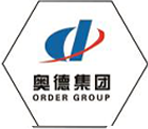
Nov . 30, 2024 09:19
Back to list
Natural Gas Pressure Regulation Station for Safe and Efficient Energy Distribution
Natural Gas Pressure Reducing Stations An Overview
Natural gas plays a crucial role in the global energy landscape, serving as a primary fuel source for residential heating, electricity generation, and industrial processes. However, the transportation and delivery of natural gas require careful management to ensure safety, efficiency, and functionality. One key component in this process is the natural gas pressure reducing station (PRDS), which plays a vital role in maintaining appropriate pressure levels throughout the gas distribution network.
Understanding Pressure Reducing Stations
A natural gas pressure reducing station is designed to lower the pressure of natural gas from high-pressure levels typically found in transmission pipelines to the lower pressures required for distribution to consumers. These stations are essential in protecting the integrity of the downstream infrastructure. They also ensure that end-users receive the gas at a safe and usable pressure.
Generally, natural gas is transported from production fields through high-pressure pipelines that can operate at pressures up to 1,500 psi (pounds per square inch). However, once the gas reaches urban areas or industrial customers, the pressures need to be significantly reduced—often to levels between 0.25 psi to 60 psi—suitable for domestic usage, industrial processes, or commercial consumption.
Components of Pressure Reducing Stations
A typical pressure reducing station consists of several key components
1. Pressure Regulators At the core of a PRDS are the pressure regulators, which automatically adjust and maintain the output pressure of the natural gas. These devices ensure that fluctuations in input pressure do not adversely affect the output pressure.
2. Filter/Strainers To protect the pressure regulators and downstream equipment from debris or contaminants, PRDS includes filters or strainers. These components help ensure a clean gas supply that maintains optimal efficiency and reduces maintenance requirements.
3. Safety Devices Safety is paramount in the operation of natural gas pressure reducing stations. Various safety devices, including pressure relief valves, are installed to automatically vent gas if pressure exceeds safe limits. This prevents potential hazards such as overpressure situations that could lead to accidents or equipment damage.
natural gas pressure reducing station

4. Control Systems Modern PRDS often incorporate advanced control systems that enable real-time monitoring and data collection. These systems provide operators with detailed insights into pressure levels, flow rates, and the overall performance of the station. Such information is crucial for proactive maintenance, troubleshooting, and operational efficiency.
5. Metering Equipment Accurate measurement of gas flow is another critical function in a PRDS. Metering equipment ensures that the volume of gas delivered to consumers is accurately accounted for, which is essential for billing and regulatory compliance.
Importance of Pressure Reducing Stations
Pressure reducing stations are indispensable for several reasons
- Safety By managing pressure levels, PRDS mitigate the risk of gas leaks or explosions, which can have catastrophic consequences.
- Reliability These stations ensure a continuous and reliable supply of natural gas. They accommodate variations in demand, adapting to peak usage times or sudden drops in consumer needs.
- Efficiency By regulating gas pressure, these stations enhance the overall efficiency of gas distribution systems. This translates to lower operational costs and improved environmental sustainability by optimizing the use of resources.
- Regulatory Compliance Many regions have stringent regulations regarding gas distribution safety and efficiency. PRDS plays a crucial role in helping operators comply with these standards.
Conclusion
Natural gas pressure reducing stations are vital components in the delivery of natural gas, ensuring that it reaches consumers safely and efficiently. As the global demand for natural gas continues to grow, the importance of these stations will only become more pronounced. Advances in technology, including automation and real-time monitoring, will further enhance the performance and safety of PRDS, ultimately contributing to a more reliable and sustainable natural gas infrastructure. By understanding the role and function of these stations, stakeholders can better appreciate the complexities involved in delivering one of the world's most essential energy resources.
Latest news
-
Safety Valve Spring-Loaded Design Overpressure ProtectionNewsJul.25,2025
-
Precision Voltage Regulator AC5 Accuracy Grade PerformanceNewsJul.25,2025
-
Natural Gas Pressure Regulating Skid Industrial Pipeline ApplicationsNewsJul.25,2025
-
Natural Gas Filter Stainless Steel Mesh Element DesignNewsJul.25,2025
-
Gas Pressure Regulator Valve Direct-Acting Spring-Loaded DesignNewsJul.25,2025
-
Decompression Equipment Multi-Stage Heat Exchange System DesignNewsJul.25,2025

